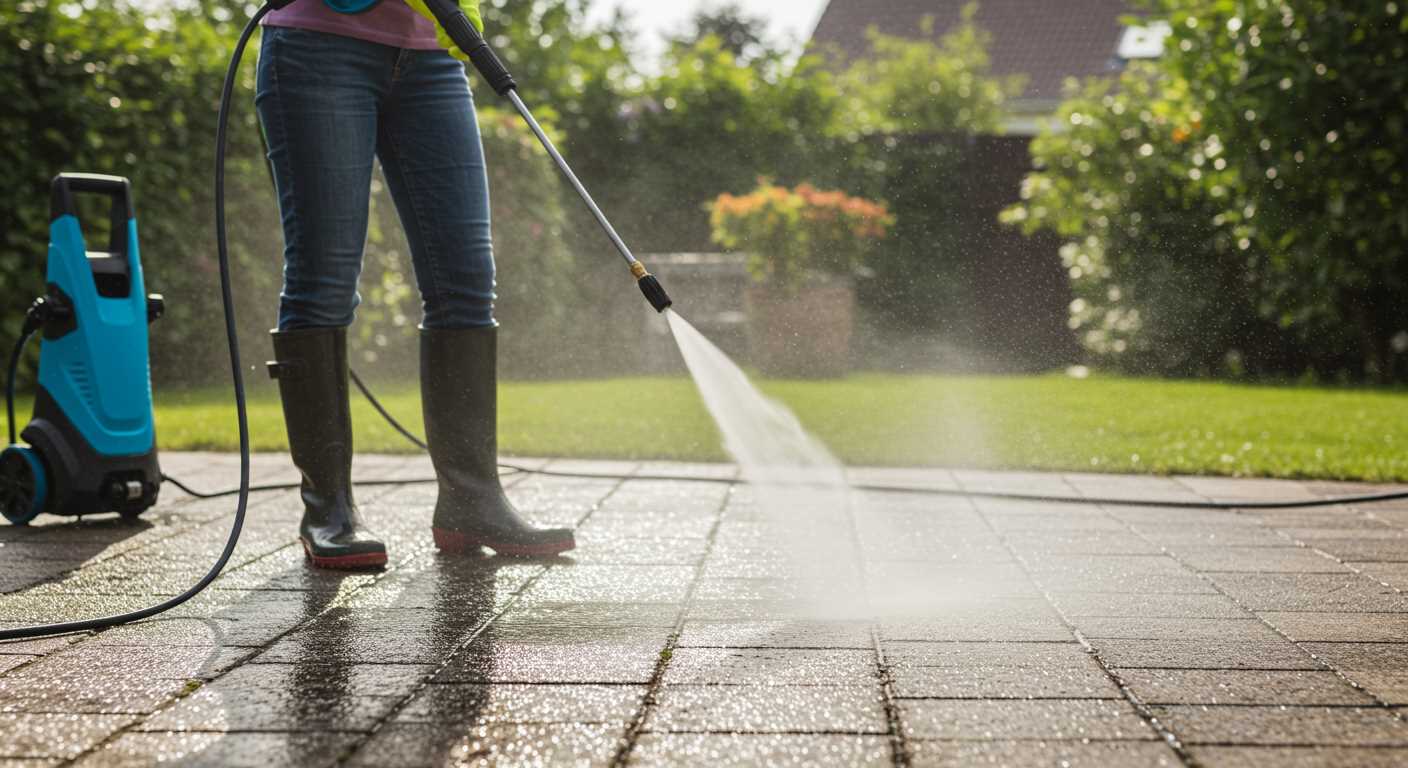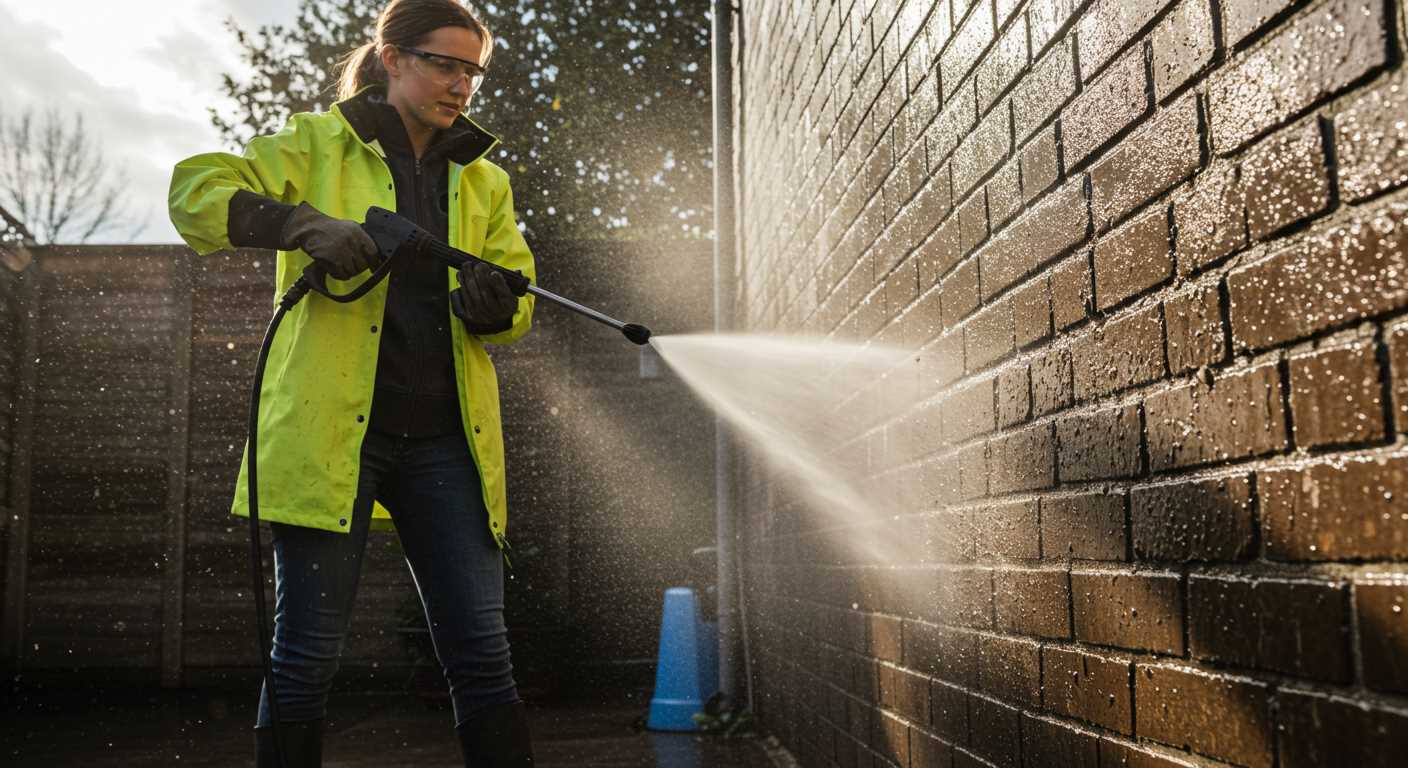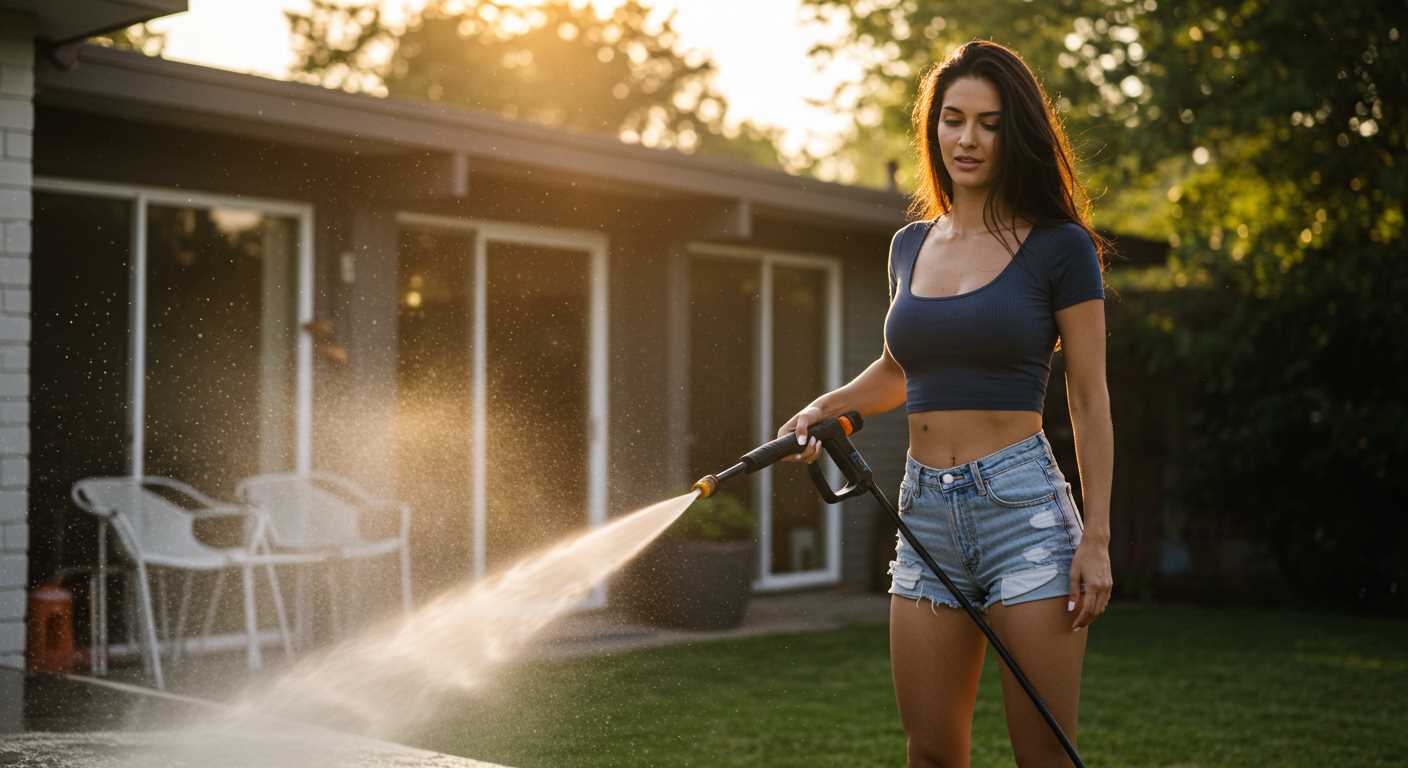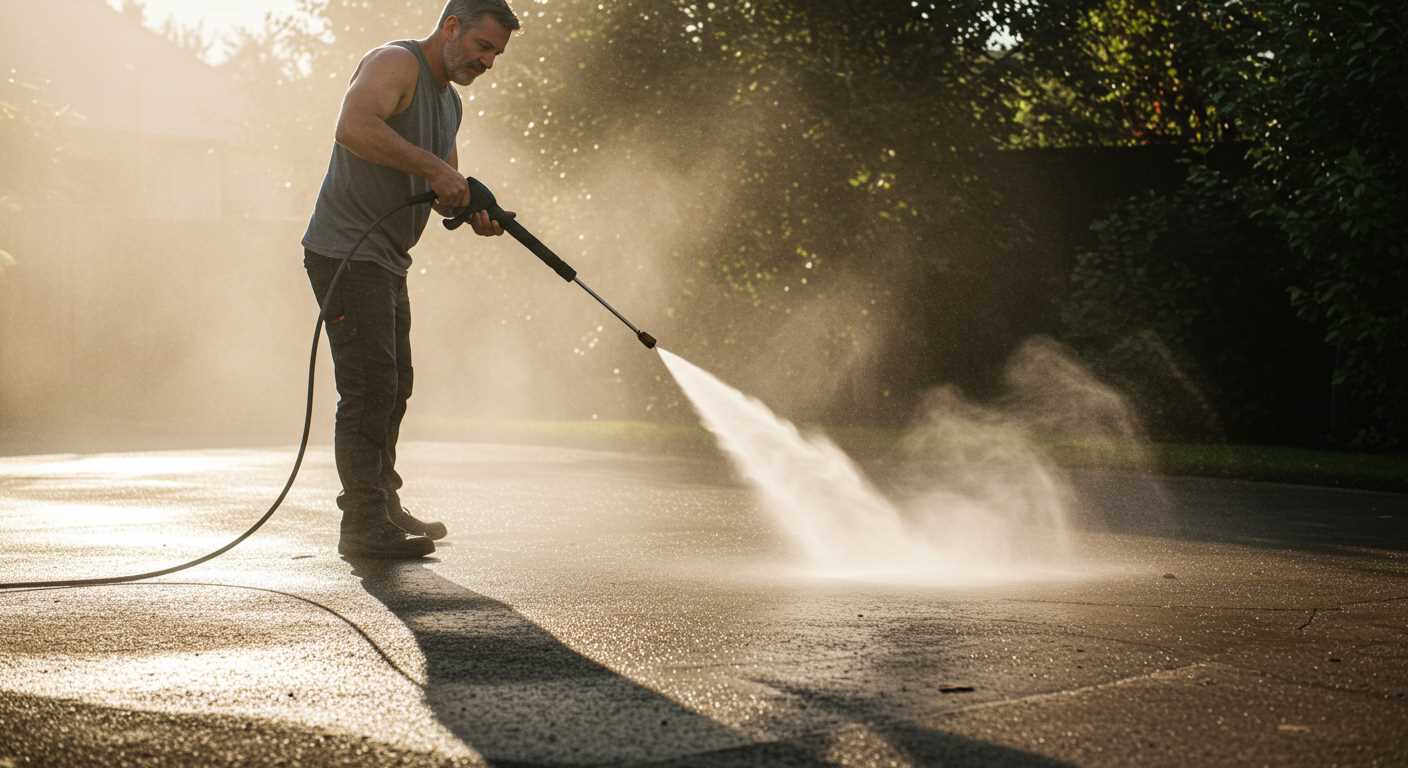



If you’re struggling with low output from your cleaning equipment, begin with an inspection of the water supply. Ensure that the hose is not kinked or blocked. A free-flowing water source is non-negotiable for optimal operation.
Next, check the filter and screen for debris. Clogged filters can significantly reduce fluid flow, leading to weak performance. Regular maintenance of these components will save you time and frustration in the long run.
Examine the nozzle for any obstructions. A blocked or worn nozzle can alter the flow dynamics, resulting in diminished cleaning capability. Replacing a faulty nozzle is often a small investment that pays off with improved efficiency.
Lastly, inspect the hose for leaks. Any loss of fluid pressure due to damage can directly impact the performance. Fixing or replacing a leaky hose is crucial for restoring the operational strength you need.
Checking the water supply connection

First, ensure that the water source is turned on. A simple oversight can lead to inadequate flow and reduced functionality.
Next, examine the hose for kinks or blockages. Any obstruction can limit the water intake and affect performance. If the hose is damaged, consider replacing it to restore optimal function.
Verify that all fittings and connections are tight. Loose couplings can result in leaks, diminishing the flow rate. Use pliers to tighten threaded connections carefully without overdoing it.
Inspect the inlet filter. Accumulated debris can restrict water access. Remove it and clean thoroughly under running water to ensure unobstructed fluid flow.
Confirm that the water supply meets the required specifications for your model. A supply pressure below recommended levels can hinder results significantly. If necessary, consult the user manual for precise requirements.
During your checks, make sure the supply line isn’t running uphill or around sharp bends, as these factors can also affect water flow. Aim for a straight and level path for best results.
Lastly, if using a rainwater barrel or similar collection system, be aware that sediments can clog the system. Regular cleaning or using a sediment filter can help maintain consistent supply.
Inspecting the Outlet Hose for Leaks

Begin by examining the entire length of the outlet hose. Look for any visible cracks, punctures, or wear that may indicate leakage. A compromised hose can significantly diminish the operational capacity.
Test for Leaks

To check for unseen leaks, run the unit at a moderate flow without any nozzle attached. Watch closely for any signs of water escaping from the hose. If you notice drips or sprays, that section of the hose requires attention.
Considerations for Replacement
If you find damage, promptly replace the hose. Ensure that the new hose matches the specifications of your device to avoid further complications. Inspect the fittings too; a faulty connection can lead to similar issues. Tighten or replace these as necessary to maintain an appropriate seal.
After making any necessary changes, retest the equipment and monitor its performance. A proper connection and an intact hose should restore the desired functionality.
Evaluating the nozzle condition and size

Inspect the nozzle for clogs or damage. A blocked or worn-out nozzle significantly reduces water flow, leading to inadequate cleaning performance. Remove the nozzle and visually check for any buildup of dirt or debris. If the opening appears constricted, soak the nozzle in a descaling solution or clean it thoroughly with a small brush or compressed air.
Assess the size of the nozzle as well. Different tasks require specific nozzle sizes. For instance, wide spray patterns are suitable for large surfaces, while narrower streams offer more force for stubborn stains. Ensure you are using the correct nozzle type for your cleaning project to maintain optimal performance.
If using a quick-connect nozzle system, ensure a tight fit. Loose connections may lead to leaks and decreased flow. Replace any damaged components immediately to achieve the desired results.
In summary, regular maintenance of your nozzle and using the appropriate size for the task will enhance efficiency and help achieve satisfactory outcomes in your cleaning endeavours.
Examining the pump for blockages and damage
First, disconnect the water supply to ensure safety while inspecting the pump. Remove any debris or dirt around the pump area to gain clear access. A thorough check can reveal issues affecting performance.
- Inspect the inlet filter: Remove the filter and check for clogs. Clean it with water or replace it if damaged.
- Look for signs of leakage: Examine the pump casing for any visible cracks or leaks. These can hinder functionality and must be fixed or replaced.
- Check for internal blockages: If the pump is removable, open it carefully and assess the interior. Look for any foreign objects or sediment that could obstruct movement.
- Assess the pump impeller: Cracks or wear on the impeller can greatly affect performance. If you notice any issues, replacing the impeller might be necessary.
- Listen for unusual noises: When reassembling and testing the unit, listen for any grinding or rattling sounds, which may indicate internal damage.
Regular maintenance of the pump ensures longevity and optimal operation. If blockages or damage are found, addressing them promptly can restore the machine’s efficiency.
Assessing the Pressure Settings and Adjustments
Check the pressure settings on your cleaning device based on the manufacturer’s guidelines. Incorrect settings can lead to inadequate performance, so ensure you are within the recommended ranges for your specific model.
Adjusting Pressure Settings
Locate the pressure adjustment dial, usually found on the trigger gun or the machine itself. Turning it to a higher setting can significantly enhance the force of the water stream, making your tasks easier. Conversely, if you’ve been using a high setting unnecessarily, dial it down for lighter jobs to avoid damage to surfaces.
Consult the Manual
Refer to the user manual for pressure adjustment steps tailored to your model. If you’ve misplaced it, many manufacturers provide digital copies online. Confirm that any adjustments align with the specifications provided for optimal performance.
Identifying Issues with the Motor or Engine
If your cleaner lacks adequate force, inspect the motor or engine. First, verify the power source; ensure the correct voltage is supplied, particularly for electric models. Use a multimeter to check for continuity in the power cord. A faulty cord can prevent full power transmission.
Signs of Motor Malfunction
A motor producing unusual sounds, excessive heat, or emitting burning smells could indicate an underlying issue. Check for debris or blockages around the motor that might hinder its operation. Listen for strange noises during startup, as they often signal mechanical problems.
Regular Maintenance Checks
Perform regular maintenance to keep the engine in optimal shape. Replace air filters routinely. Inspect spark plugs for corrosion, and consider cleaning them or replacing them if worn. A dirty spark plug can impede ignition, reducing performance.
| Issue | Possible Solution |
|---|---|
| Motor not starting | Check power supply and connections |
| Overheating | Examine ventilation and clean filters |
| Unusual noises | Inspect for debris and mechanical issues |
| Faulty spark plug | Replace or clean spark plug |
After addressing these areas, test operation to determine if the cleaning unit is back to normal function. Persistent issues may require professional assessment or replacement components.
FAQ:
What are the common reasons for a power washer to lose pressure?
A power washer may lose pressure for several reasons. One common issue is a clogged nozzle, which restricts water flow. Another possibility is a damaged or worn-out pump that fails to build up pressure effectively. Additionally, air in the hose can create pressure fluctuations. Leaking hoses or fittings can lead to water loss and insufficient pressure as well. Lastly, using the wrong type of detergent can also impact pressure, as some soaps may not rinse well and lead to blockages.
How can I troubleshoot my power washer if it has no pressure?
If your power washer shows no pressure, start by checking the nozzle for clogs and cleaning it thoroughly. Next, inspect the hose and connections for any leaks. Ensure the water supply is steady and adequate, as low input pressure can affect performance. Look at the pump for signs of damage or wear, and make sure to bleed any trapped air from the system by running it for a few moments. If these steps don’t resolve the issue, it may be worth consulting the manufacturer’s guidelines or seeking professional assistance.









